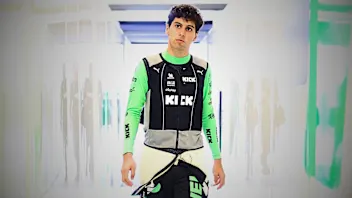TECH TUESDAY: How Red Bull and Honda cleverly transformed 2020’s RB16 into the title-winning RB16B


Max Verstappen became the first Red Bull world champion for eight years with his dramatic and controversial victory in the Abu Dhabi season finale.
Aside from Verstappen’s personal performances, it was the culmination of years of development from both the team and their power unit partner Honda. Together they have steadily eroded the previously dominant performance advantage of the Mercedes team.
EXPLAINED: Understanding one of the most chaotic, controversial title showdowns in F1 history
They have done so with a car – the RB16B – which has remained true to the team’s long-established high-rake aerodynamic concept. This was an extremely effective development of last season’s RB16 given the regulatory freeze restrictions put on everyone for 2021, announced last year in response to the economic challenges of the pandemic.
Here are the major foundations upon which that amazing upgrade in performance were based.
Power Unit
Honda’s RA621 was in essence an all-new design, within what is allowed by the power unit regulations. It was smaller and more powerful than the 2020 power unit. A major re-assessment of priorities between combustion chamber efficiency and energy captured by the exhaust led to a totally new cylinder head.
Increased valve angles (the angle between the inlet and exhaust valves) allowed the head to be lower and for the camshafts to be smaller in diameter. A different material for the block allowed the gap between the cylinders to be smaller.

The tiny dimensions – smaller even than the infamous ‘Size Zero’ of 2015 which had its turbo within the vee of the engine – allowed the rear of the car to be packaged even more tightly for aerodynamic gain. It also needed less cooling capacity, allowing the Red Bull aero team to reduce the radiator inlet and outlet sizes.
It was competitive with Mercedes on power throughout the year, and in contrast to 2020 could often deploy for longer on the straight, though the difference was small.
It suffered less performance degradation at high mileages than the Mercedes, with team boss Christian Horner reckoning the difference between a brand new and end-of-life unit was in the order of 0.1s of lap time. Verstappen needed to take only one extra engine over the seasonal allocation of three – and even that was only because one suffered a cracked block as a result of his Silverstone crash.
Rear suspension
The development token system introduced as part of the ’21 regulations restricted the scope of changes teams were allowed to make in adapting their 2020 chassis (which had to be retained) for ’21.
Red Bull chose to spend their two tokens on a new gearbox casing. This was to facilitate a totally revised rear suspension, which was dramatically swept back (as Mercedes had done in 2020) to increase the volume between the rear wheels and the diffuser. This is aerodynamically extremely productive real estate. The more high-speed air which can be directed through there, the harder the diffuser will pull on the underfloor airflow, increasing the car’s downforce.
TECH TUESDAY: The banned features that will make a big impact on 2022's wheel-to-wheel action
Having spent the two tokens on making a new gearbox casing, Red Bull were forced to retain the existing mounting points of the suspension, but managed to sweep it back anyway by re-purposing those mounting points. The bottom wishbone was reversed to sweep rearwards rather than forwards, with the forward leg picking up (at the inboard end) at what had previously been the rear leg mounting point.
The rear leg now picked up from what had previously been used for the toe link, which had moved from ahead of the driveshaft to behind it, using what had previously been the pick-up point for the mounting point for the forward leg.

Diffuser, barge board and front wing developments
Around the time of the two Grands Prix in Austria, Red Bull were heavily into their aero development programme, with truck loads of new parts arriving throughout each of those consecutive weekends.
An arrangement of ‘sharks teeth’ along the entire width of the diffuser’s trailing edge created mini vortices. These were combined with gurney flaps atop the diffuser to more effectively energise these vortices.
A new front wing appeared in the Austrian races too, with a slightly more aggressive upsweep at the outboard ends. This, together with new barge boards, tweaked the airflow to take full advantage of the new, more powerful diffuser.

In all, the RB16B was a highly effective aerodynamic upgrade over last year’s, pushed along by a more powerful Honda. In Verstappen’s hands, it was enough to break the monopoly of Mercedes drivers' titles in the hybrid era. Just…
Next Up
Related Articles
 PalmerJolyon Palmer picks his top performers in 2025
PalmerJolyon Palmer picks his top performers in 2025 QuizTHE BIG QUIZ OF 2025: 20 questions on the 2025 Formula 1 season
QuizTHE BIG QUIZ OF 2025: 20 questions on the 2025 Formula 1 season Mekies on ‘very difficult’ decision to demote Tsunoda
Mekies on ‘very difficult’ decision to demote Tsunoda ExclusiveBortoleto on his rookie year and Audi excitement
ExclusiveBortoleto on his rookie year and Audi excitement.webp) End Of Year Reports 2025Aston Martin’s best and worst moments from 2025
End Of Year Reports 2025Aston Martin’s best and worst moments from 2025 Norris praises support from Hamilton, Vettel and more
Norris praises support from Hamilton, Vettel and more